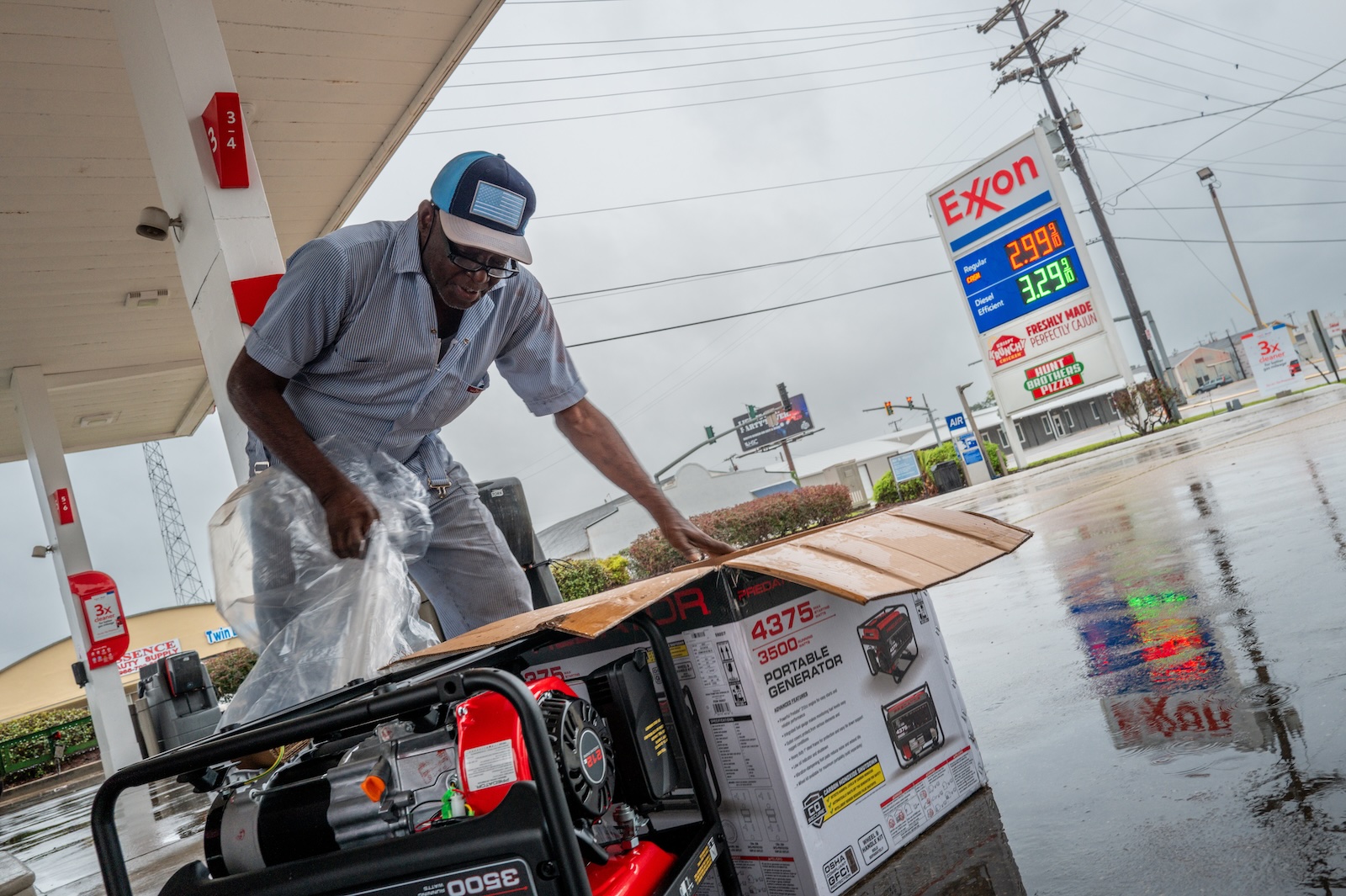Blowing 100 mph winds, Hurricane Francine ripped into Southern Louisiana on September 11, knocking out power for hundreds of thousands of people. Its most dangerous and damaging effect, though, was the storm surge of seawater that it bulldozed ashore, inundating coastal parishes like Terrebonne and Lafourche. A preliminary estimate by AccuWeather puts the damage at $9 billion, which will likely be revised as scientists, insurance companies, and government officials gather more data.
In the days, weeks, and months after a hurricane like Francine makes landfall, a horde of public agencies and insurance companies try to figure out roughly how much they think the disaster will cost. That’s far more than just a number on the books: These estimates help state governments prioritize where to send aid and help kick-start insurance claims, allowing people and local economies to recover faster from disaster.
You’ll often see dramatically different estimates of hurricane damage, because each is done with its own purpose: Preliminary assessments made by, for instance, the Federal Emergency Management Agency are used in the first 30 days after landfall to help determine if a major disaster declaration is warranted, and also helps officials figure out which public assistance programs might be needed in an area struck by a calamity.
Initial damage estimates can also raise public awareness, potentially boosting the amount of donated aid. “We saw this during Harvey in Texas back in 2017,” said Jon Porter, AccuWeather’s chief meteorologist. “Many people across the country did not realize the magnitude and severity of the damage and suffering during the storm. Once AccuWeather issued our preliminary estimate of the total damage and economic loss from Harvey at $190 billion, we saw a surge of additional help and relief flood into Texas from across the country.”
Insurance companies can do a quick estimate of the damage, since they already have data on property values. “But really, to get an accurate picture, you need to do a careful case study,” said Adam Rose, who studies the economics of disasters at the University of Southern California. “These usually aren’t completed for another year or two, but it’s useful to have sort of a quick and dirty estimate right up front.”
AccuWeather’s preliminary estimates collect a range of costs like property and infrastructure damage, lost jobs and wages, airport closures, and much else. “Our estimates also account for the cost of evacuations, temporary relocation, and the long-term impacts on transportation, tourism, and business logistics,” Porter said.
Tallying up how much a disaster costs also matters in the long run because it signals to people the economic importance of disasters, and serves as an indicator on whether progress is being made on recovering from such events. On a national scale, one of the most frequently cited sources is the Billion-Dollar Weather and Climate Disasters dataset, a monthly report by the National Oceanic and Atmospheric Administration’s National Centers for Environmental Information. It records U.S. disasters that overtake the billion-dollar benchmark, gleaned from mining a mix of public federal and state statistics, as well as private sector data such as insurance claims, according to Adam Smith, an applied climatologist at the agency who leads the dataset.
Those billion-dollar price tags include losses racked up by a number of extreme weather events, such as hurricanes, severe storm events, tornadoes, floods, winter storms, wildfires, droughts, and heat waves. Not all monetary damages are included in that count, though — just what NOAA deems “direct total losses.”
Their definition of direct total losses spans 16 different categories, including damage to homes, vehicles, businesses, government buildings — as well as what’s in them — business interruptions, and the loss of living quarters when you’re out of your home as it’s repaired or rebuilt. The assessment also incorporates damage to roads, bridges, levy systems, and electric grids, as well as crops. It is, as Smith describes it, “a comprehensive yet still conservative estimate of what is truly lost.”
There’s still a lot it doesn’t cover, like health-related costs that stem from a disaster, or the environmental degradation that can happen when a hurricane hits, Smith said.
Not only does the billion-dollar dataset estimate omit physical health care costs, but it also fails to count mental health crises left in the wake of natural disasters. And then there’s nature. Say a cluster of coral reefs or mangroves, two well-established natural buffers against storm surges, are damaged during a hurricane, effectively reducing the area’s resilience against future storms. Those associated costs also aren’t considered in the billion-dollar disaster damage assessment.
By not accounting for all these consequences, in addition to other expenses that tend to emerge post-disaster like supply chain interruptions, the dataset captures just a portion of a major disaster’s total price tag, and therefore only provides a snapshot of what losses look like as a warming planet makes disasters more frequent and severe.
And when something like the damage to mental and physical health isn’t accounted for, this can contribute to the exclusion of the very people who tend to lose the most in a disaster and what can be done to alleviate that historic burden.
“If all we focus on is the cost to the economy, disaster losses are bearable, right? Within our economy, the GDP tends to go up after disasters in the United States,” said Andrew Rumbach, a senior fellow at the Urban Institute. “That doesn’t mean they’re a good thing.”
After a storm hits, the loss of power and water and the destruction of bridges and roads can make it difficult or impossible for businesses to start up again. These are their own forms of widespread economic losses. If a hurricane strikes New Orleans and Louisiana’s economic productivity dips in the following years, it takes a lot of number-crunching to determine how much the storm itself contributed, and how much productivity would have declined anyway.
The very nature of hurricanes means the economic damage can spread far beyond the coastlines they directly hit. Atlantic hurricanes form out at sea, using warm waters as fuel then might slam into ports along the Gulf and the East Coast, like when Katrina caused $1.7 billion in damage to Louisiana’s ports. Even ports that don’t get hit can still cause economic ripple effects by shutting down as a precaution as a storm approaches. Goods don’t get where they need to be on time, and the costs stack up.
So in the longer term, the economic tallies of hurricane losses will often be much higher than initial estimates. But those first rough calculations are critical to avoid even bigger losses later. “Having insurance companies pay their premiums sooner,” Rose said, “having government assistance implemented sooner and more effectively, you can sort of kick-start the recovery and reduce those business interruption losses.”
When talking about disaster damages, it’s mainly in the language of business and economics, punctuated with staggering dollar-signs. But there’s a risk that accompanies focusing too much on price tags, warns Rumbach, and that risk has to do with how disasters expose and exacerbate existing social divides. “There’s also just that bigger question that we should always ask: Is monetary value the right metric?”
The way Rumbach sees it, a hurricane can destroy a mansion and a dozen less expensive mobile homes. Although the damages to the mansion and the collective damages to the mobile homes as they are crunched by governments and insurance agencies might end up comparable, the scale of the impact just isn’t the same.
“Focusing too much on economic numbers, that really runs the risk of underestimating the impacts that disasters have for marginalized populations,” Rumbach said. “Everything involved costs less. They make less income. Their homes are worth less, their infrastructure is less of a cost. Does that mean that the disasters are less important because they cost less money?”





